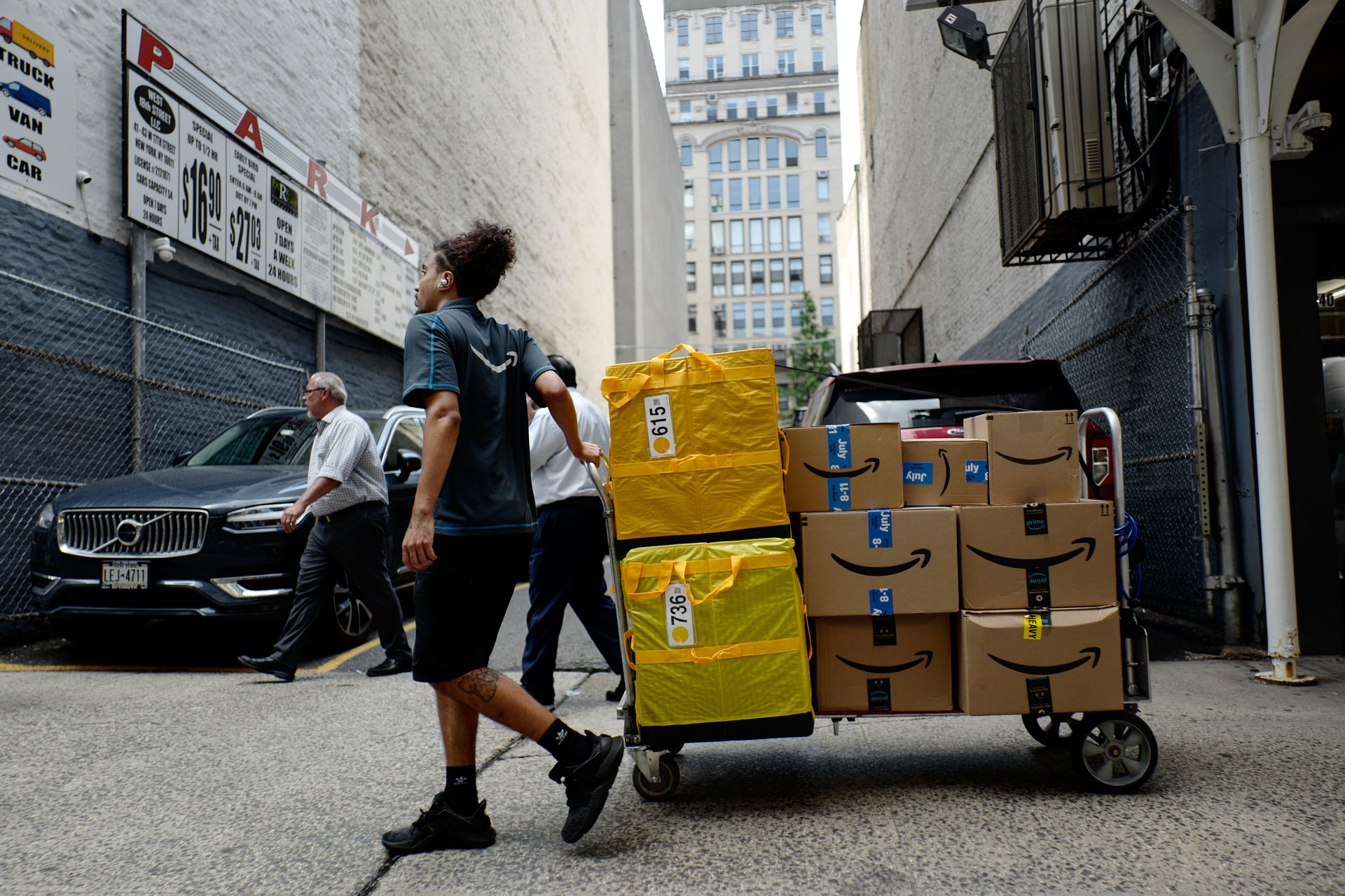Amazon Prime sign-ups reportedly lagged in U.S. leading up to annual sales event
Prime sign-ups reportedly dropped about 2% before and during Prime Day compared to the same time frame last year

Klaus Galiano/Bloomberg via Getty Images
U.S. consumers aren’t signing up for Amazon Prime like they used to despite the retailer’s efforts to increase sales opportunities.
Suggested Reading
Amazon Prime sign-ups are reportedly about 2% lower than they were a year ago following an extended four-day Prime event in July.
Related Content
Amazon decided to double the length of its annual Prime Day event from 48 hours to 96 hours for the first time ever. Shoppers needed to have an Amazon Prime account to access deals from the event that ran from July 8 through July 11.
Even with Amazon’s longer sales period, the online retailer registered 5.4 million U.S. consumers for Prime accounts in the 21 days leading up to and during its event — a 116,000 drop from the same time last year and 106,000 less than Amazon’s sign-up goal, according to internal data seen by Reuters. The outlet said it was unable to determine how many days the company used to calculate sign-ups for the full 2024 period.
Amazon signed up 1.6 million users during the event, which exceeded the company's goal by about 6%. In the 21 days prior to the sales event, the retailer signed up 3.9 million subscribers in the U.S., 5% off the company’s target goal for the time period — and from the same time frame last year — based on the data reviewed by Reuters.
"Prime membership continues to show strong growth and customer engagement in the U.S. and internationally, as reported in our second-quarter earnings," an Amazon spokesperson said in a statement to Quartz. "Additionally, Prime Day 2025 and the three weeks leading up to the event had record-breaking Prime customer sign-ups worldwide."
Reuters said it wasn't able to review the global data.
In its second quarter earnings, Amazon reported that subscription service sales — which includes Amazon Prime memberships — were up 12% compared to the same quarter last year.
Amazon said in a release that it had “record sales and savings” during the event. Reuters reported that the retailer said it had garnered record-breaking sign-ups in the 25 days surrounding the sales event, but did not provide specifics.
The drop in Amazon Prime subscribers compared to last year could be another indicator that U.S. consumers are pulling back on spending as inflation persists and tariffs increase costs.
However, U.S. retail sales actually showed growth in July and June, following a decline in retail sales by 0.9% in May, which could mean consumers aren’t done spending quite yet.
Amazon announced its extended Prime Day event shortly after the U.S. Census Bureau reported May’s retail sales numbers.
As the retailer's U.S. sign-ups reportedly lag, Amazon is apparently getting rid of its Prime Invitee Program beginning Oct. 1, according to a notice seen by CNBC. The program lets subscribers share their Prime membership with others even if they didn't share the same address.
— Ben Kesslen contributed to this article.
